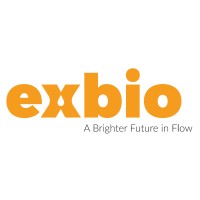CD94 / PE-Cy7 / HP-3D9
Product Details
| Description | CD94, also known as KLRD1 (killer cell lectin-like receptor D1), is a transmembrane glycoprotein of the C-type lectin family, which forms disulfide-linked heterodimers with NKG2A, B, C, E, H proteins, constituting functionally distinct receptors of NK cells and related cell types. CD94/NKG2A and CD94/NKG2B heterodimers serve as inhibitory, whereas CD94/NKG2C and CD94/NKG2E as activating receptors. The ligand for CD94/NKG2 complexes has been identified as HLA-E. Extent of CD94 expression on NK cell surface can be used to demonstrate their progress through the differentiation process. | |
|---|---|---|
| Conjugate | PE-Cy7 | |
| Clone | HP-3D9 | |
| Target Species | Human | |
| Applications | FC | |
| Supplier | EXBIO | |
| Catalog # | Sign in to view product details, citations, and spectra | |
| Size | ||
| Price | ||
| Antigen | ||
| Host | ||
| Isotype |
About CD94
Natural killer (NK) cells are a distinct lineage of lymphocytes that mediate cytotoxic activity and secrete cytokines upon immune stimulation. Several genes of the C-type lectin superfamily, including members of the NKG2 family, are expressed by NK cells and may be involved in the regulation of NK cell function. KLRD1 (CD94) is an antigen preferentially expressed on NK cells and is classified as a type II membrane protein because it has an external C terminus. Several transcript variants encoding different isoforms have been found for this gene. [provided by RefSeq, May 2017]
Natural killer (NK) cells are a distinct lineage of lymphocytes that mediate cytotoxic activity and secrete cytokines upon immune stimulation. Several genes of the C-type lectin superfamily, including members of the NKG2 family, are expressed by NK cells and may be involved in the regulation of NK cell function. KLRD1 (CD94) is an antigen preferentially expressed on NK cells and is classified as a type II membrane protein because it has an external C terminus. Several transcript variants encoding different isoforms have been found for this gene. [provided by RefSeq, May 2017]
About PE-Cy7
PE-Cyanine®7 (PE-Cy7, RPE-Cy7) is a far red-emitting tandem fluorophore that combines phycoerythrin (PE) and Cy7. The donor molecule, PE can be excited by the 488-nm blue, 532-nm green, or 561-nm yellow-green laser and and transfers energy to the acceptor molecule, Cy7, which emitts light that can be captured with a 780/60 nm bandpass filter. PE-CY7 has an excitation peak at 565 nm and an emission peak at 778 nm, and is a suitable alternative to PE-Vio®770 and PE-Fire™ 780.
PE-Cyanine®7 (PE-Cy7, RPE-Cy7) is a far red-emitting tandem fluorophore that combines phycoerythrin (PE) and Cy7. The donor molecule, PE can be excited by the 488-nm blue, 532-nm green, or 561-nm yellow-green laser and and transfers energy to the acceptor molecule, Cy7, which emitts light that can be captured with a 780/60 nm bandpass filter. PE-CY7 has an excitation peak at 565 nm and an emission peak at 778 nm, and is a suitable alternative to PE-Vio®770 and PE-Fire™ 780.
Experiment Design Tools
Panel Builders
Looking to design a Microscopy or Flow Cytometry experiment?
Validation References
Reviews & Ratings
| Reviews |
|---|
Looking for more options?
613 CD94 antibodies from over 31 suppliers available with over 70 conjugates.





